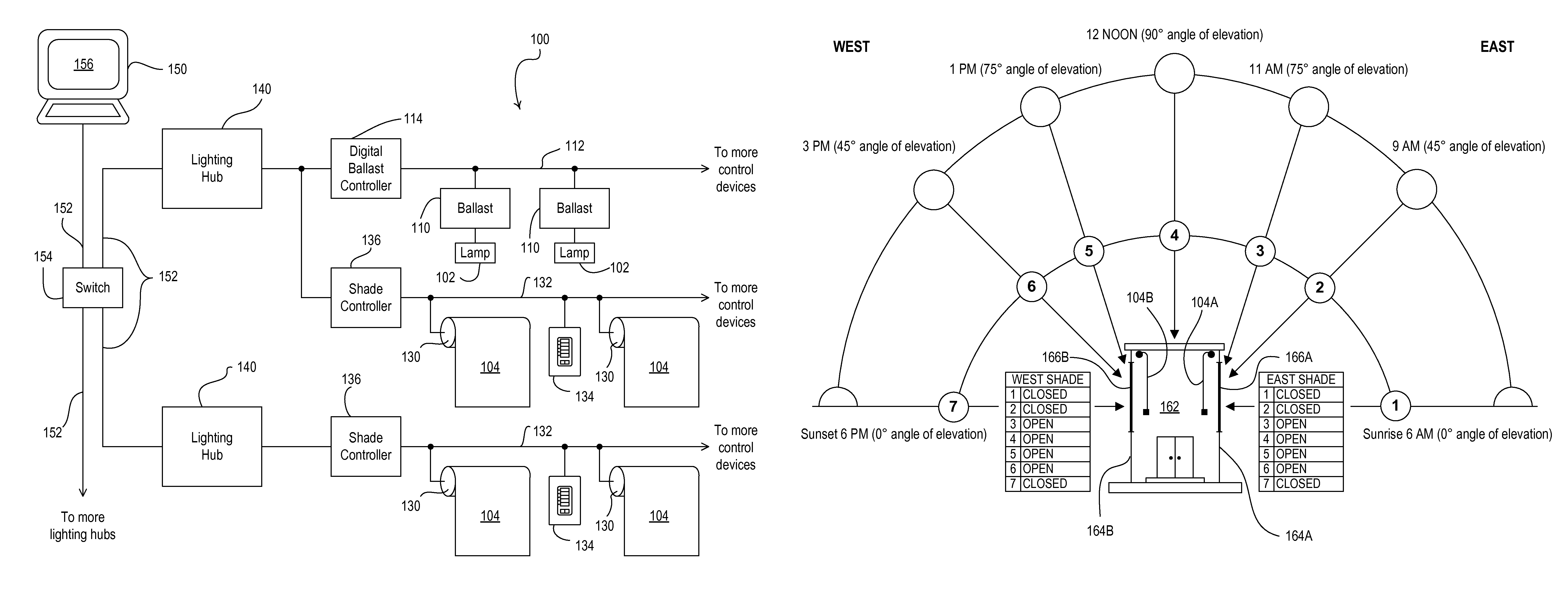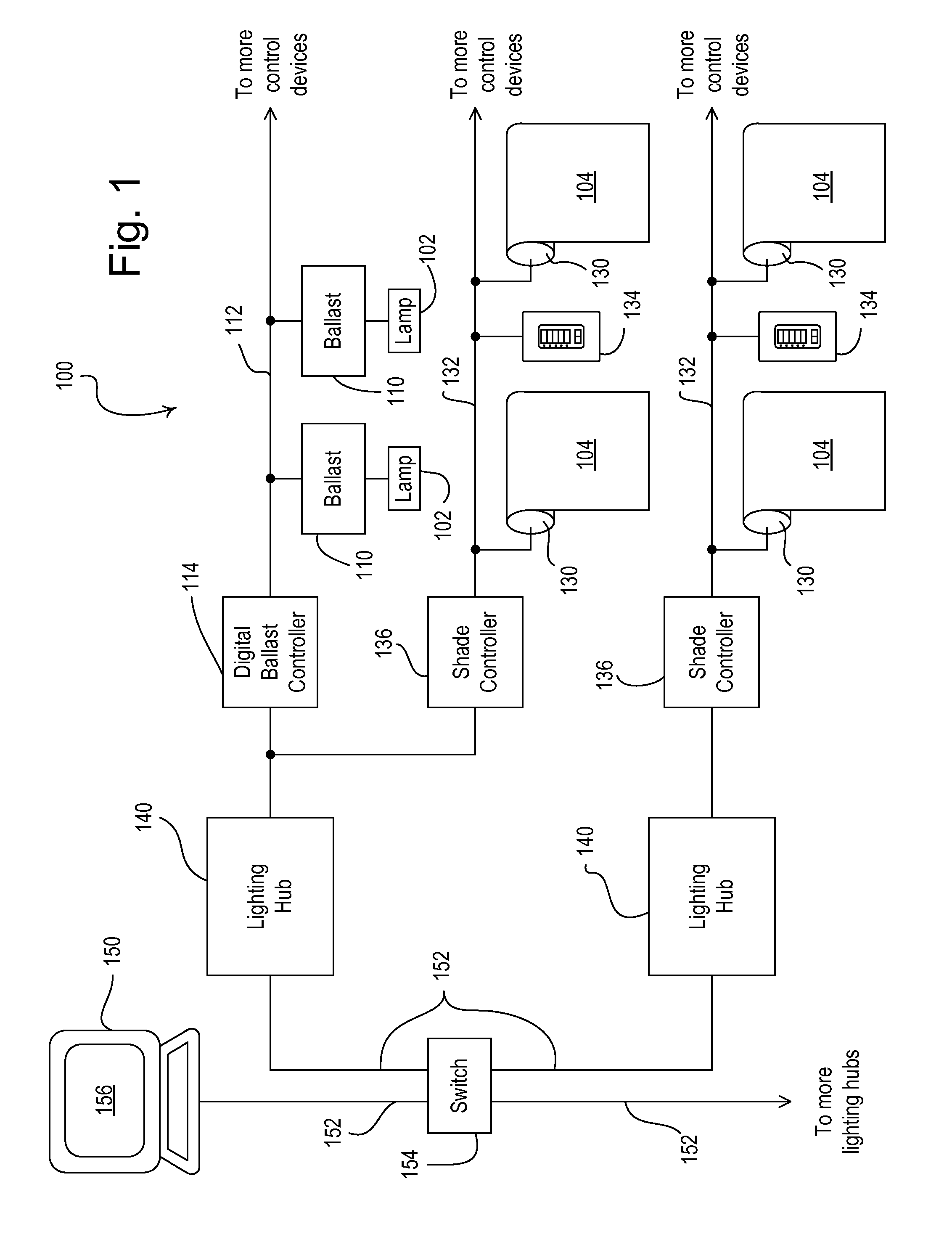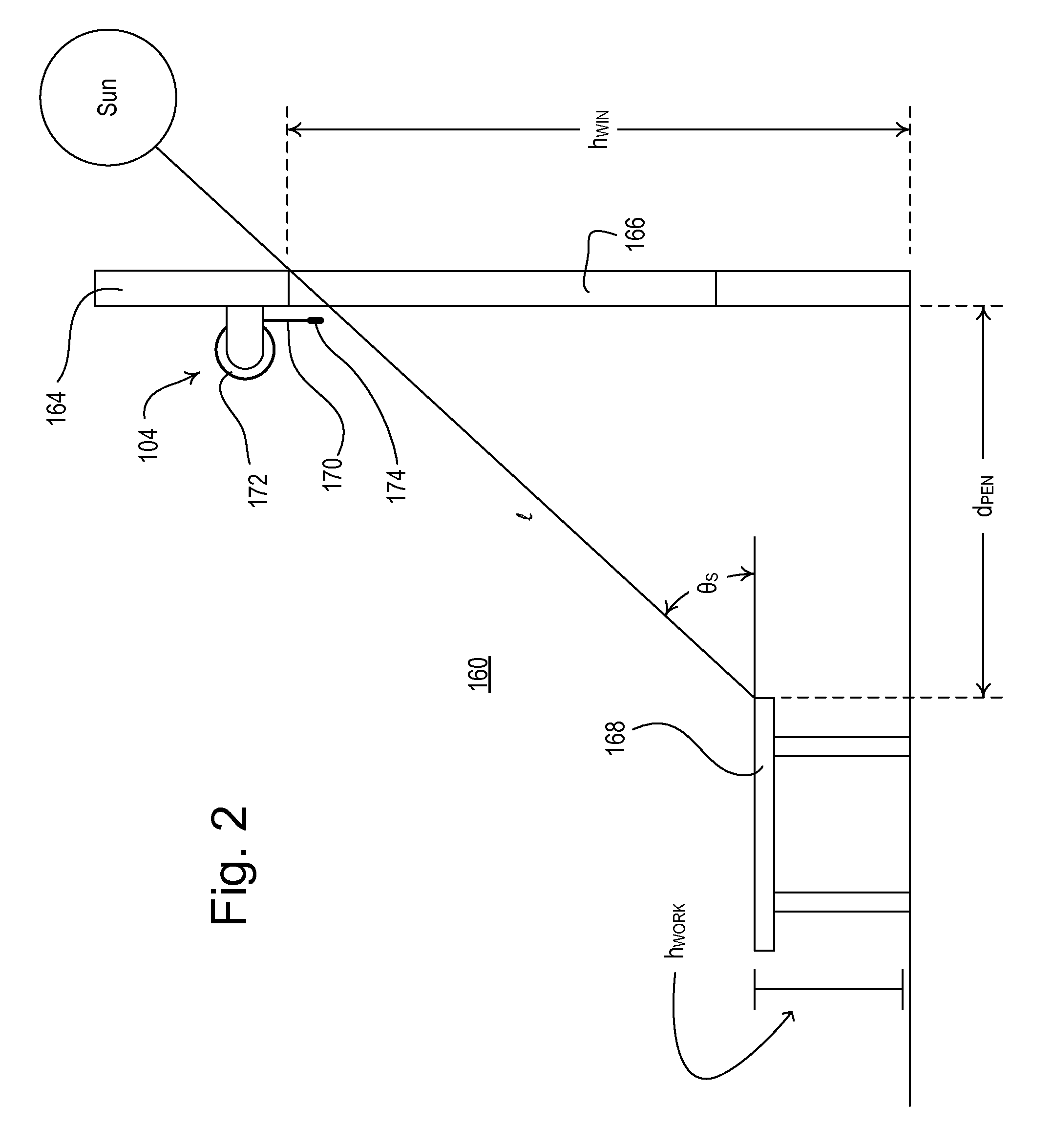Method of automatically controlling a motorized window treatment while minimizing occupant distractions
a technology of automatic control and occupant distraction, applied in the direction of motor/generator/converter stopper, dynamo-electric converter control, instruments, etc., can solve the problem of many distractions for occupants of the space, and achieve the effect of minimizing occupant distractions
- Summary
- Abstract
- Description
- Claims
- Application Information
AI Technical Summary
Benefits of technology
Problems solved by technology
Method used
Image
Examples
first embodiment
[0047]According to the present invention, the motorized roller shades 104 are controlled such that the sunlight penetration distance dPEN is limited to less than a desired maximum sunlight penetration distance dMAX during all times of the day. For example, the sunlight penetration distance dPEN may be limited such that the sunlight does not shine directly on the table 168 to prevent sun glare on the table. The desired maximum sunlight penetration distance dMAX may be entered using the GUI software of the PC 150 and may be stored in memory in each of the lighting hubs 140. In addition, the user may also use the GUI software of the PC 150 to enter and the present date and time, the present timezone, the local longitude λ and latitude Φ of the building 162, the façade angle φF for each façade 164 of the building, the height hWIN of the windows 166 in spaces 160 of the building, and the heights hWORK of the workspaces (i.e., tables 168) in the spaces of the building. These operational c...
second embodiment
[0055]FIG. 7 is a simplified flowchart of a timeclock configuration procedure 400 executed periodically by the lighting hub 140 of the load control system 100 to generate a timeclock schedule defining the desired operation of the motorized roller shades 104 of each of the façades 164 of the building 162 according to the present invention. For example, the timeclock configuration procedure 400 may be executed once each day at midnight to generate a new timeclock schedule for one or more areas in the building 162. The timeclock schedule is executed between a start time tSTART and an end time tEND of the present day. During the timeclock configuration procedure 400, the lighting hub 140 first performs an optimal shade position procedure 500 for determining optimal shade positions POPT(t) of the motorized roller shades 104 in response to the desired maximum sunlight penetration distance dMAX for each minute between the start time tSTART and the end time tEND of the present day. The ligh...
third embodiment
[0080]According to the present invention, the lighting hub 140 generates a timeclock schedule in response to a maximum number NMAX of movements of the motorized roller shades 104 that may occur during the present day, as well as in response to the minimum time period TMIN that may exist between any two consecutive movements of the motorized roller shades. As in the first two embodiments of the present invention, the timeclock schedule provides for control of the motorized roller shades 104 to limit the sunlight penetration distance dPEN to be less than the desired maximum sunlight penetration distance dMAX. The desired maximum sunlight penetration distance dMAX, the maximum number NMAX of roller shade movements, and the minimum time period TMIN between shade movements may be stored in the memory in the lighting hub 140 and may be entered by a user using the GUI software of the PC. For example, the maximum number NMAX of roller shade movements may have a minimum value of approximatel...
PUM
 Login to View More
Login to View More Abstract
Description
Claims
Application Information
 Login to View More
Login to View More - R&D
- Intellectual Property
- Life Sciences
- Materials
- Tech Scout
- Unparalleled Data Quality
- Higher Quality Content
- 60% Fewer Hallucinations
Browse by: Latest US Patents, China's latest patents, Technical Efficacy Thesaurus, Application Domain, Technology Topic, Popular Technical Reports.
© 2025 PatSnap. All rights reserved.Legal|Privacy policy|Modern Slavery Act Transparency Statement|Sitemap|About US| Contact US: help@patsnap.com



